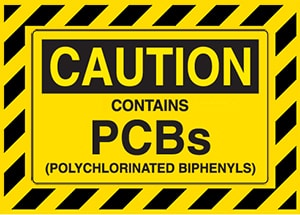 Polychlorinated Biphenyl (PCB) is a class of toxic chemicals used in the production electrical insulators, capacitors, refrigerators and other types of electrical equipment. Due to Polychlorinated Biphenyl’s negative impact on both human health and the environment, the federal government placed a strict ban on its use. It wasn’t until the late 1970s when the ban was lifted, allowing companies to use PCBs under strict guidelines set forth by the Environmental Protection Agency (EPA).
Polychlorinated Biphenyl (PCB) is a class of toxic chemicals used in the production electrical insulators, capacitors, refrigerators and other types of electrical equipment. Due to Polychlorinated Biphenyl’s negative impact on both human health and the environment, the federal government placed a strict ban on its use. It wasn’t until the late 1970s when the ban was lifted, allowing companies to use PCBs under strict guidelines set forth by the Environmental Protection Agency (EPA).
Enacted on October 11, 1976, The The Toxic Substances Control Act (TSCA) is designed to secure information on both new and old PCBs as well as other toxic chemicals. Companies are required by law to mark and label chemicals such as these to reduce the chance of an accidental spill or environmental contamination. For a more detailed explanation, please visit the EPA’s TSCA page. It’s important to note, however, that some states may have their own set of rules and regulations to compliment the efforts of the TSCA.
Items Requiring The Polychlorinated Biphenyl “PCB” Mark:
- Transformers containing PCBs
- Access paths leading to transformers containing PCBs
- Voltage regulators containing PCBs
- PCB capacitors with a minimum of 3 pounds of fluid
- Any and all containers with PCB or PCB-contaminated materials
- PCB storage sheds and designated areas
- Vehicles intended for transporting PCB and PCB-contaminated materials
It’s important for company owners to go through their workplace to not only identify these items, but to label them as well. Allowing these items to go unmarked leaves the company vulnerable to fines handed down by the EPA. However, you can protect your company by labeling all of the necessary items listed above. You can see an example of a proper Polychlorinated Biphenyl mark in the image depicted above. It’s a bold yellow mark with black writing that clearly outlines the item as “PCB.”
Decommissioned Items Containing PCBs Labeled “Date Removed”
In addition to placing a mark on all of the items previously mentioned, the TSCA also states that companies must place a label with the “date removed from service” on disposed items containing PCB or PCB-contaminated equipment. This is the date when the item in question was disconnected from the electrical system and not the date when the item was physically disposed of or thrown away.
Labeling and marking PCBs isn’t an overly difficult process, but it’s necessary to create a safe and compliant work environment. Hopefully, this post will give you a better understanding of PCB and how to properly label them.